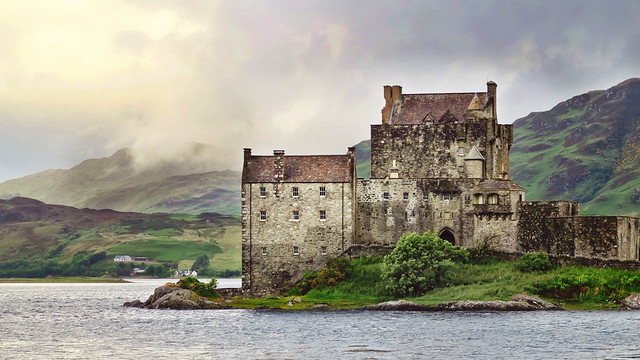Producing and consuming Romantic Scotland: Exhibitions, heritage, nation and the Chinese market
This project supports knowledge exchange between academic and cultural institutions in Scotland and China. It aims to improve understanding of the audiences.

In 2017, Nanjing Museum hosted Romantic Scotland: Castles, Land and Sea, an exhibition curated by Historic Environment Scotland, Nomad Exhibitions and the Scottish National Gallery. Using the exhibition as a basis for research, the Romantic Scotland project aims to support knowledge exchange between academic and cultural institutions in Scotland and China, with a target of increasing understanding of audiences and capacity for audience research in both countries.
The empirical data, knowledge and understanding from the research will be of significant importance for cultural, heritage and tourism organisations with respect to future initiatives, policy, and practice. In China, this project allowed Nanjing Museum to take the lead in expanding the standard practice in Chinese museums of simply gathering quantitative data, to a more sophisticated methodology, analysis, interpretation and presentation of qualitative audience research. In Scotland, it will help to enhance understanding of what motivates Chinese visitors to engage with western culture and heritage.
Funding
Romantic Scotland is funded by the Arts and Humanities Research Council (AHRC). The project also helps to deliver on AHRC’s remit to ‘enhance its contribution in policy development and public engagement, making explicit the contribution of arts and humanities research to the understanding of national life in an international framework’ as well as to increase ‘openings for international research and co-development with agencies operating overseas’.
Project aims
- To build the capacity of Chinese museums in gathering, analysing and interpreting audience research data
- To capture the reactions of Chinese audiences to the Romantic Scotland exhibition and broaden understanding of Chinese perceptions of western cultural heritage
- To discover how exhibitions, and those that construct them, influence the interpretation of key signifiers of Scottish cultural heritage
- To provide feedback to inform engagement and management practices across differing cultural organisations, and promote cultural exchange and capacity building for all stakeholders involved
Research methods
A range of methods were used to capture and analyse the Chinese visitors’ experiences, attitudes and interpretations of Scotland’s cultural heritage.
Visitor observations were carried out through a mobile tracking software application developed by the research team which monitored visitor behaviour. More traditionally, a self-completion survey was conducted on-site at the exhibition to gather visitor opinions. The same visitors were then encouraged to provide written comments through graffiti wall post-it notes and postcard messages, with further reflections uploaded through video messages (‘video diaries’) captured at the exhibition site. The researchers also conducted focus group interviews with visitors and Nanjing Museum volunteer staff at the close of the exhibition.
In order to facilitate knowledge exchange, semi-structured in-depth interviews were conducted with UK stakeholders and Nanjing Museum staff, and an international workshop was organised by the Suzhou Municipal Administration of Tourism to share best practice on heritage conservation and the promotion of international tourism.
Project team
- Rebecca Bailey (Principal Investigator), Historic Environment Scotland
- Dr Andrew Manley (Co-investigator), University of Bath
- Dr Wang Yiwen (International Co-investigator), Xi'an Jiaotong-Liverpool University, Suzhou
- Professor Michael Silk (Co-investigator), Bournemouth University
- Dr Lo Yun Chung (Research Associate), University of Bath

